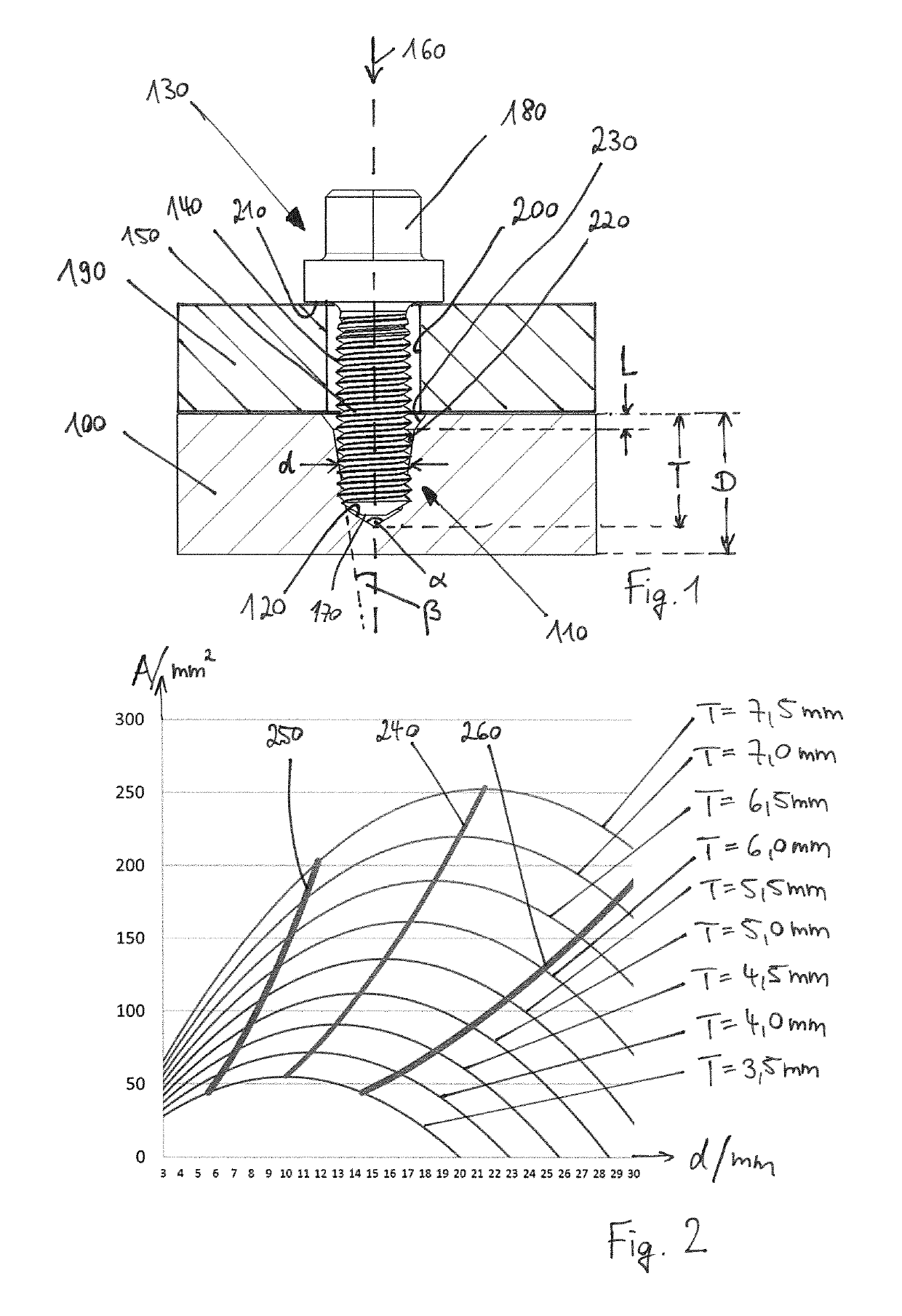Fastening method
a fastening element and fastening technology, applied in the direction of fastening means, nuts, sheet joining, etc., can solve the problem of limited effective length of the fastening element for anchoring in the blind bor
- Summary
- Abstract
- Description
- Claims
- Application Information
AI Technical Summary
Benefits of technology
Problems solved by technology
Method used
Image
Examples
Embodiment Construction
[0024]In FIG. 1 a plate 100 is shown which, within the context of the invention, constitutes a base element. The plate 100 preferably comprises or consists of metal, in particular aluminum, or an alloy, in particular steel, or concrete, in particular cellular concrete, or plastic or wood, and preferably forms a wall or a floor for example of a ship, a drilling rig or an industrial building. For fastening of a component 190 to the panel 100, a through hole 200 is drilled into the component 190 and a blind bore 110, which defines a depth direction 160 and at a depth T has a blind bore base 120, is drilled into the plate 100. The through hole 200 and the blind bore 110 are preferably drilled one after the other. In the exemplary embodiments which are not illustrated, the through hole and the blind bore are produced in one single drilling operation, for example by drilling through the component into the base element.
[0025]The blind bore base 120 is conical with a cone opening angle α. A...
PUM
 Login to View More
Login to View More Abstract
Description
Claims
Application Information
 Login to View More
Login to View More - R&D
- Intellectual Property
- Life Sciences
- Materials
- Tech Scout
- Unparalleled Data Quality
- Higher Quality Content
- 60% Fewer Hallucinations
Browse by: Latest US Patents, China's latest patents, Technical Efficacy Thesaurus, Application Domain, Technology Topic, Popular Technical Reports.
© 2025 PatSnap. All rights reserved.Legal|Privacy policy|Modern Slavery Act Transparency Statement|Sitemap|About US| Contact US: help@patsnap.com

